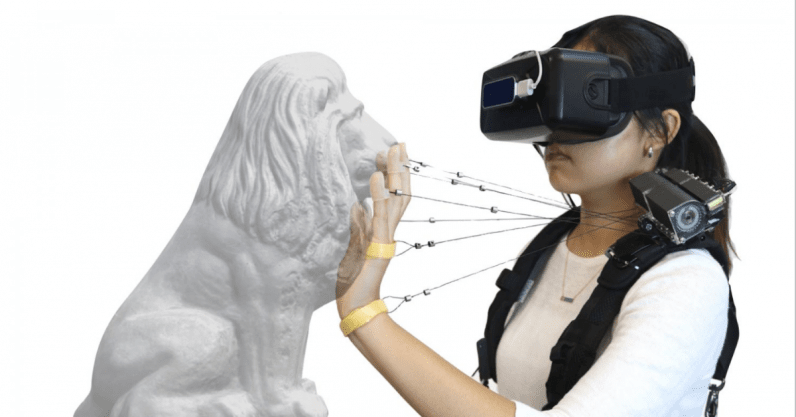
A new haptic device simulates the feel of objects in VR by pulling on strings attached to a hand. The shoulder-mounted system is equipped with spring-loaded retractors like those used on neck cord ID badges. These retractors unwind a string to each fingertip, one to the palm, and another to the wrist. A motion sensor on the VR headset then tracks the user’s hand movements and sends the signals to the springs. When it senses that the user’s close to an object, the ratchets lock the strings to mimic the feeling of the surface. [Read next: This AI suitcase could help visually-impaired people to travel] This mechanism…
This story continues at The Next Web
from The Next Web https://ift.tt/2xZ1iqh
Comments
Post a Comment